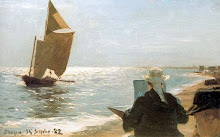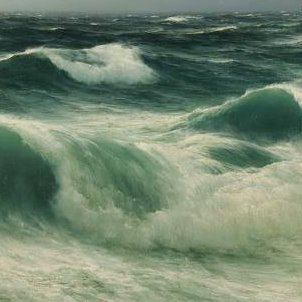Don't be afraid to use black in a seascape; what better to bring out areas of white foam and spray. When choosing to use black oil colour, there are several variations of black pigment to choose from, just as there are different whites.
Ivory Black is a deep velvety black that is cooler in mass tone, but warm in tint (slight brownish undertone). Lamp Black, a very old pigment dating back to prehistoric times, is also a deep, velvety black but has a bluish undertone. Mars Black is the strongest black and is warm in both mass tone and tint. Usually, for sea and sky, a cool, bluish black would be more suitable than a brownish black.
Many artists shy away from using black at all because it tends to "dirty" colour in mixing, and instead prefer to use a colour's complement to tint or shade. However, using black as a colour, you can avoid ‘dirtiness’ to some degree by taking note of the colour bias and tinting strength. This is where it becomes important to pay attention to the differences in different blacks and how to use them.
Many oil paint manufacturers also produce Indigo - a very dark blue - not as scary to use as black.


































No comments:
Post a Comment